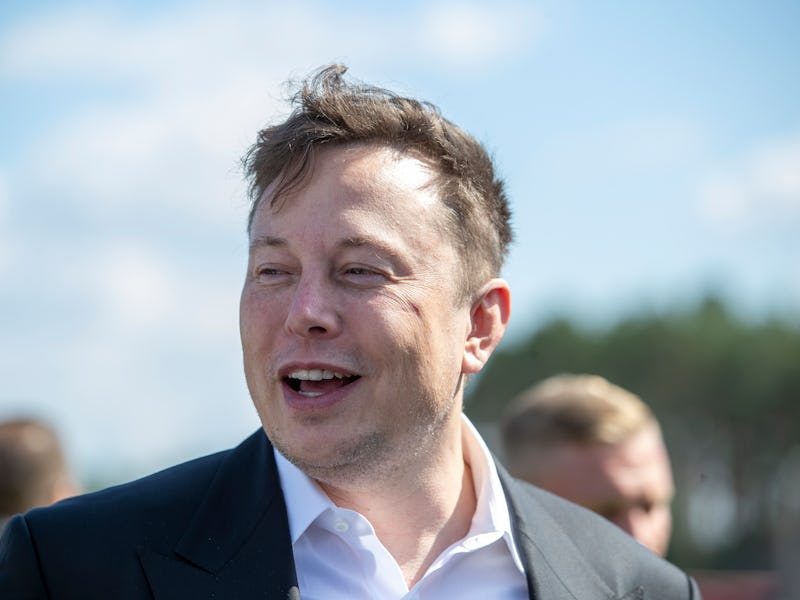Elon Musk explains how Tesla plans to produce 20 million cars per year by 2030
In a recent earnings call, Tesla CEO Elon Musk revealed more details on how the company plans to massively increase production.

Tesla has shipped just over one million cars in 12 years.
But CEO Elon Musk wants to go much further – with an ambitious goal to produce 20 million cars per year by 2030.
Musk mentioned the goal during the company's Battery Day presentation in September, when he also outlined new technologies that could massively boost battery production and bring down costs.
Then Musk upped the ante, claiming on Twitter Tesla could reach that level before 2030 with "consistently excellent execution."
It's a bold statement. During the company's third-quarter earnings call last week, Musk shed further light on how Tesla could make it happen.
The details came in response to a question about the path to 20 million from Rod Lache, managing director at Wolfe Research. Musk explained that simply it "seemed like a good goal to have."
With around two billion cars in the world, 20 million cars per year would mean Tesla replaces one percent of the global fleet each year.
"It's difficult to say that... are we really changing the world if we're not switching out one percent of the global fossil fuel vehicles?" Musk said. "I'm not sure that we can make that argument unless we change at least one percent of vehicles per year."
It's an ambitious target, especially considering Tesla delivered 367,500 cars in 2019.
This is puny compared to other car producers. General Motors, on the other hand, sold nearly three million cars last year. The European Automobile Manufacturers' Association reported that around 70 million cars were produced globally in 2019. ARK Invest research found electric car sales were about 1.8 million last year, but they predict growth to 35 million in the next five to six years, accounting for 40 percent of total sales.
In terms of how production would improve over time to make 20 million reality, Musk refused to be drawn into the details. The CEO has claimed before that it's hard to predict how manufacturing will grow over time beyond the start and end point.
Musk doesn't have great track record here. Tesla's Model 3 is a case in point. Originally produced in July 2017, Musk aimed for 5,000 cars per week by December 2017 — only to produce 202 per week. The company did eventually meet its goal to produce 5,000 cars per week in July 2018.
Tesla Model 3.
"The tricky thing with predicting things midway through an exponential is that if things are doubling every year, or even just growing 50 percent, then if you shift plus-minus one year, it has a huge effect on the number," Musk said in the earnings call.
"It sounds like wow, you either massively exceeded or massively undershot. But actually what's going on is... a whole bunch of pretty big S-curves, that integrate into a gigantic S-curve."
But later in the call, Musk shed some light on how Tesla might meet this goal. Pierre Ferragu from New Street Research noted that, by the end of this year, the company's production capacity looks set to reach 850,000 cars per year.
From there, Tesla is expected to increase capacity at its Shanghai facility, while also opening facilities in Berlin and Austin.
"Am I right thinking next year, we should expect you to deliver, like somewhere between 840,000 and one million cars during the year?" Ferragu asked.
"It's in that vicinity," Musk said. "You're not far off."
The Inverse analysis – Musk has set himself a tough target. A massive increase in production depends on an increase in battery manufacturing. This was the focus of the Battery Day presentation, which outlined advancements that could reduce production footprint 10-fold. Tesla is now aiming to produce three terawatt-hours per year by 2030, up from around 35 gigawatt-hours in 2019.
It would be a staggering number of cars to produce per year – and it wouldn't be the first time Musk has declared a wildly ambitious target only to fall short. For example, despite promising to complete a cross-country autonomous road trip by the end of 2017, Tesla only released a beta of its full self-driving software this month.
But with time running out on moving to cleaner energy sources, these sort of ambitious production goals could be what helps push the broader industry to ditching fossil fuels faster.